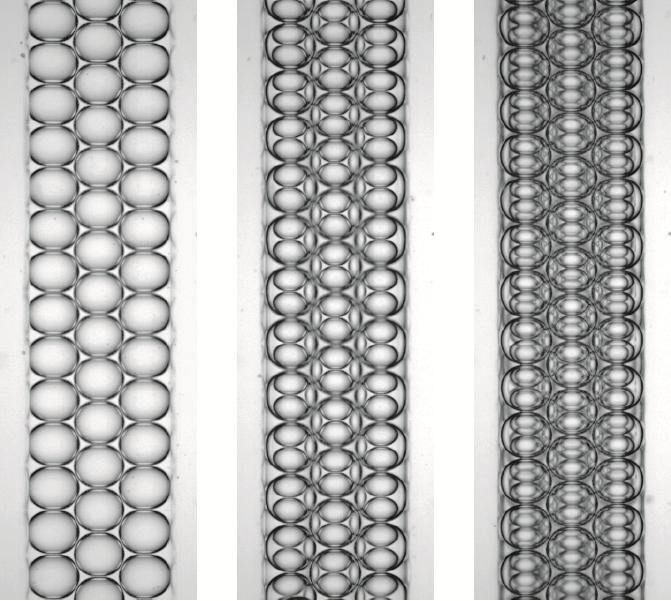Jun 7 2019
Self-assembly is a mechanism where basic building blocks interact and arrange themselves into ordered structures. Nature is replete with extremely interesting examples of self-assembled structures.
 One, two, and three layers of self-assembled droplets in 3D microchannels. (Image credit: SUTD)
One, two, and three layers of self-assembled droplets in 3D microchannels. (Image credit: SUTD)
Having inspired by nature, for a long time, scientists have intended to use self-assembly as a “bottom-up” fabrication method to produce complex devices and materials. At present, the self-assembly of ordered emulsions has led to greater attention for its potential application in various fields like high-throughput analysis and material synthesis.
Microfluidic methods provide the potential to produce and self-assemble highly monodisperse droplets into ordered emulsions in a single device. However, self-assembly in microfluidic flows generally needs high droplet density.
A group of scientists, under the guidance of Assistant Professor Michinao Hashimoto, at the Singapore University of Technology and Design (SUTD) has used three-dimensional (3D) microchannels to effectively attain self-assembly of low-density droplets in microfluidic flows.
When compared with earlier research works, which used microchannels with no changes in height, the scientists at SUTD used a microchannel with a steady increase in height. In such 3D microchannels, the droplets, unconstrained by the bottom or top walls and steered by a density difference with the surrounding liquid, sink to the bottom of the microchannel or float at the top of the microchannel.
Later, they amass, occlude, and self-assemble into ordered structures. The scientists showed that self-assembly into two-dimensional (2D) lattices can possibly be achieved when droplets used up just 5% of the total volume of liquid injected into the microchannel, and with further gradual increase in the droplet concentration, self-assembly into 3D lattices could be achieved.
To explain in detail the potential of their finding, the scientists used self-assembled 2D lattices of droplets as a model and produced millimeter-wide hydrogel fibers with anisotropic pore structures.
The simplicity and versatility of the concept—the use of 3D microfluidics for the controlled self-assembly of droplets—should be of interest to researchers exploring the interface between microfluidics, self-assembly, and soft matter.
Dr Pravien Parthiban, Postdoctoral Fellow, SUTD
Parthiban is the lead author of the work.